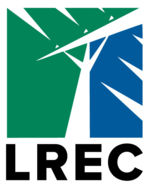No doubt about it, we’re an electrified society. That simple fact was driven home in the aftermath of the recent series of strong hurricanes and tropical storms that pounded our coastal states. We simply cannot live our modern lives without electricity. Commerce, health, food and water supplies, security, and safety are extremely vulnerable when there is no power.
Considering that, have you ever thought about all that you and your family get out of electricity? Just how much do you depend on electric power? Compare your benefits to what you pay for electricity. Electricity is a pretty good value, right?
How good a value? I recently read an informative article that brought this to light (pun intended). The article described that analysis of a recent Commerce Department report indicated that just 1.30 percent of American’s consumer expenditures in August were for electric bills. Additionally, the 2017 year-to-date figures (at the time the article was written) show that as a percentage of expenditures, what Americans are paying for electricity is at an all-time low and has been on a consistent decline for several years. Electric bills were 1.94 percent of consumer expenditures in August 1995—49 percent higher1 than August of this year!
Electric cooperatives have always been concerned about affordability. While the percentages I noted above are national figures, we have a similar story to tell here at Lake Region Electric Cooperative.
Locally, we’ve worked hard to create efficiencies and develop new revenue streams that will help us reach our goal of rate stability. Lake Region has made steady progress in this regard. Several years ago, our rates were higher than those being charged in our peer group of Minnesota electric cooperatives. I am very pleased to say that is no longer the case. Lake Region’s rates are now one of the lowest in our peer cooperatives.
Additionally, we’ve accomplished this without sacrificing service reliability. In fact, we’ve been very aggressive in our approach to vegetation management along power line right-of-way. Along with system updates and technology improvements, we’ve reduced outage times 61 percent over the last 10 years.
In addition to service reliability and affordability, it’s important to co-op members that we also be good stewards of the environment. Clean and renewable energies are trending upward, aided by advancements in technology. In short, the generation of electricity is getting cleaner. At the generation and transmission (G&T) level, more wind resources are being developed and there is less use of coal. Great River Energy, the G&T cooperative system that Lake Region is part of, has already retired its Stanton Station power plant in North Dakota. Prior to being shut down, the coal-fired power plant had been generating electricity on a limited basis because it was often more affordable to operate other plants or purchase power from the regional market.
 At our local distribution cooperative level, we’ve been working on developing community solar and residential solar arrays. We are now providing natural gas in a portion of our service area. We’re also evaluating the possibility of creating a local, community based renewable energy project that would combine a large wind turbine and commercial solar array in a hybrid model to offer even more renewable energy to our members. Each of these projects are good for stabilizing rates and protecting the reliability of the electric supply for Lake Region’s member-owners.
At our local distribution cooperative level, we’ve been working on developing community solar and residential solar arrays. We are now providing natural gas in a portion of our service area. We’re also evaluating the possibility of creating a local, community based renewable energy project that would combine a large wind turbine and commercial solar array in a hybrid model to offer even more renewable energy to our members. Each of these projects are good for stabilizing rates and protecting the reliability of the electric supply for Lake Region’s member-owners.

1As reported in Public Utilities Fortnightly, Public Utilities Reports, Inc.
 Lake Region Electric Cooperative
Lake Region Electric Cooperative